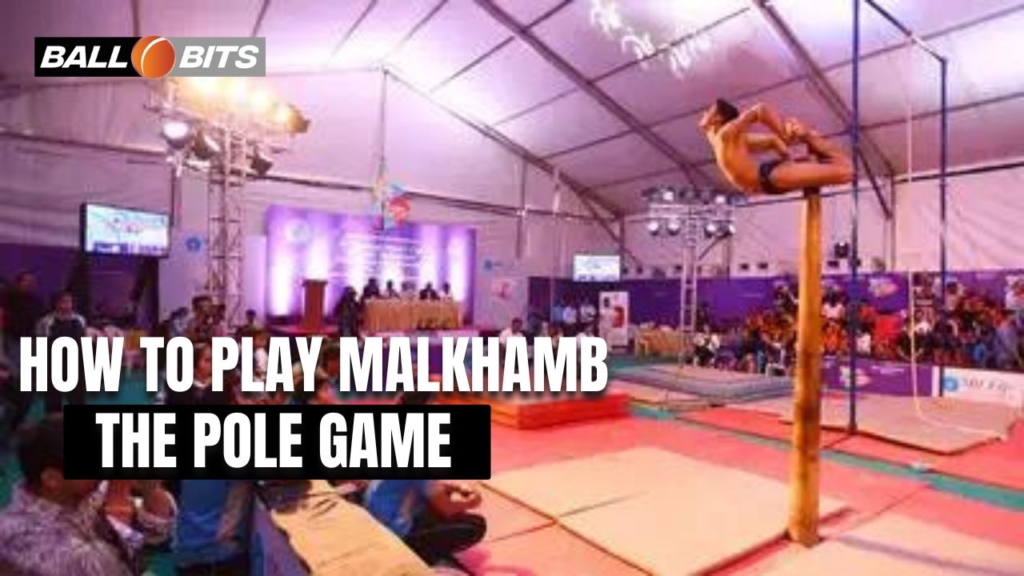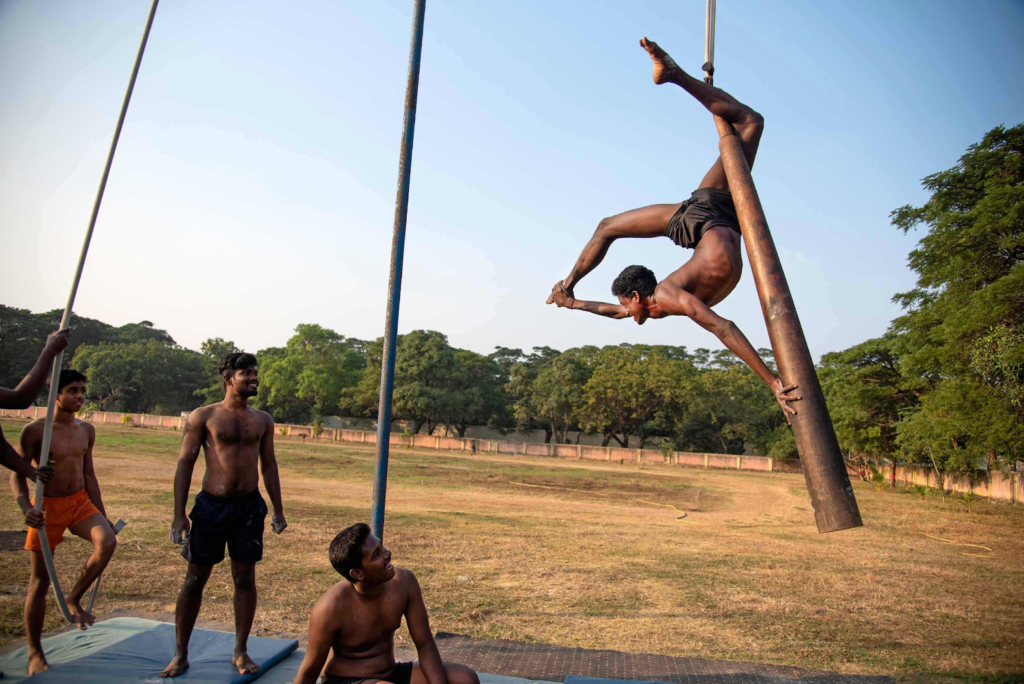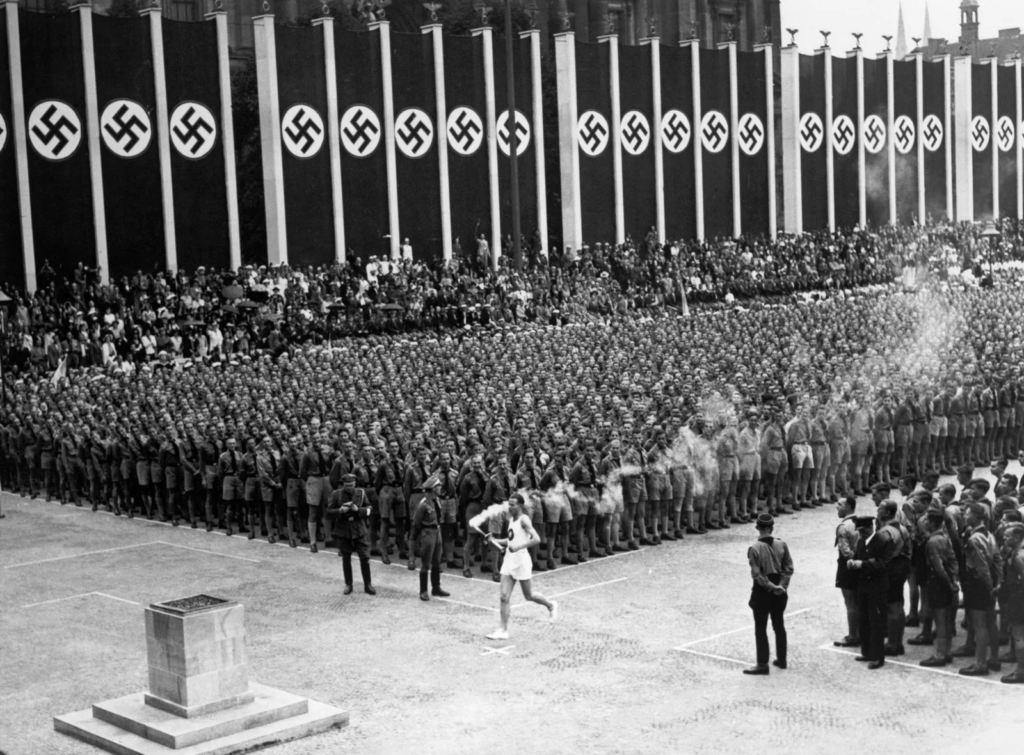

Mallakhamb is a captivating, age-old Indian sport that combined gymnastics, yoga, and acrobatics elements. It has recently gained popularity.
If you want to learn more about how to play mallakhamb, this blog will help you to understand the origin and rules of Mallakhamb.
The Roots of Mallakhamb
This ancient Indian sport originated in Maratha or Maharastra.Mallakhamb is derived from the Marathi words “Malla”, which means wrestler and “Khamb”, which means pole.
This sport was initially a training regimen for wrestlers of India in the 12th century. Wrestlers used to practice Mallakhamb to enhance their strength, flexibility, and balance, all essential to their sport’s success.
History and Origin of the Mallakhamb
This ancient Indian sport originated in the first half of the 12th century. Wrestlers, who practised on wood poles, are mentioned in the Manasollasa, a text by the Chalukyas, written in 1153 A.D.
Balambhatta Dada Deodhar, who was the trainer of the second Peshwa Bajirao, brought it back in the latter part of the 19th century. He tried to spread the word about this activity.
The forms of ancient and modern Mallakhamb have many similarities to the human skeleton., Initially, Mallakhamb was focused on new kusti techniques, but now gymnastics is also included in the game.
The modern form of the game needs a flexible body, attentive muscles and mind, focus and muscle expansion, rhythmic breathing, wide-open eyes, etc. On the top level of the game, the difficulty is more intense. The requirement for safety equipment is a must now.
Mallakhamb Equipment – The Basics
Before practising Mallakhamb, you must acquaint yourself with the essential sport equipment. The main equipment used in the game is the Mallakhamb pole. There are various forms and styles of Mallakhamb, each with distinct features.
At the core of Mallakhamb is a vertical wooden pole that varies in height to accommodate various levels of expertise. They are usually made from polished teak wood and have been used to make traditional Mallakhamb poles for plain bodies to give a firm grip.
For modern poles, stainless steel or fibre-reinforced plastic is also good for durability and safety.
How To Play Mallakhamb?

The rules of Mallakhamb resemble those of gymnastics. Participants perform acrobatic tricks using a vertical pole or rope as a prop. Judges award points based on the perfection of their moves.
In total, five categories are used to judge competitors:
1. Mounting (where athletes jump on and run on the pole),
2. Acrobatics (where athletes perform flips, turns, and twists on the pole),
3. Catches (where athletes catch the pole after flying through the air),
4. Balances (where athletes demonstrate their balance on the pole),
5. Dismounts (where performers jump off gracefully from the top of the pole).
The judges score each participant during the performance, and the one with the highest score is crowned the champion.
How many types of Mallakhamb
There are three main types of Mallakhamb.
The POLE MALLAKHAMB: A pointed pole is used for this type of performance. The pole is decorated with hooks and series of markings. It is positioned between the ground and the pole’s base. Through Mallakhamb, performers develop a lean, muscular body.
The abdomen, back portion, arms and thighs can benefit the most from these exercises, which are also good for developing strength in various other activities and sports, including gymnastics and wrestling.
Hanging MALLAKHAMB: This form of Mallakhamb is easier than Pole Mallakhamb. The exercises are challenging due to the movement and spinning of the Mallakhamb. A wooden post is placed vertically in the ground for this practice.

The Mallakhamb pole is 225 cm tall from the ground. The middle of the pole is 45 cm around, the top is 30 cm around, and the bottom is 55 cm around. The neck of the pole is 20 cm high, with a circumference of 15 cm. The upper knob has a radius of 13 cm.
Cane/rope MALLAKHAMB: In rope mallakhamb, the player performs exercises by hanging from a rope attached to a tall support. The rope is thin, about 1 to 2 millimetres thick, and 5.5 metres long. The performer grabs the rope with one or both hands and holds it between the big toe and the second toe.

They climb the rope and wrap it around their body in different ways. Then, they take on various Udi (“to fly”) poses, some of which resemble natural human postures.
Traditionally, Rope mallakhamb used a cane rope, but now cotton ropes are used because quality cane is hard to find. Performers must do various moves without tying any knots in the rope.
Instead of the wooden post used in other mallakhamb types, this version uses a 2.5 cm thick cotton rope. The rope is balanced on top of 32 glass bottles arranged on a wooden platform, a modern twist to the traditional practice.
Mallakhamb: Basic Techniques and Safety Precautions
To play Mallakhamb safely, you should start with the fundamental techniques and safety measures.
Warm-Up and Stretching
Before begining Mallakhamb, players should start with a thorough warm-up and stretching exercises to prepare their muscles for the intense workout. Warm-up and stretching help prevent injuries and increase flexibility.
Grip and Posture
A good hold on the pole is essential. Ensure your hands are clean and sweat-free, and use a firm but not too tight grip. Keep your back straight, and your core muscles engaged when you are on the pole.
Balance and Control
Mallakhamb is a game of balance and control. To develop these skills, start with simple poses and exercises as a beginner.
Slow but Steady Progression
Progress in Mallakhamb can be slow, but it should be steady. Starting with easy exercises and poses is good initially. After you gain confidence and strength, start with more advanced techniques. Don’t rush; otherwise, it will bring injuries.
Safety First
Safety is paramount in Mallakhamb. A spotter or coach must always be present during practice, especially for beginners. They can provide guidance and support and while ensuring your safety during training sessions.
Tips for Mallakhamb Success
Before starting your Mallakhamb journey, remember these essential tips to promise your success:
Patience and Perseverance
Mallakhamb is challenging, and progress may sometimes take time. Patience and persistence are required, along with dedication and time, to become successful.
Balanced Diet and Nutrition
A balanced diet is necessary to support your Mallakhamb practice. Proper nutrition helps increase your body’s energy and perform at its best.
Hydration
Along with nutrition, hydration is important. Drink plenty of water during your practice sessions. Dehydrated muscles result in cramps. Adequate water is crucial for your overall well-being.
Rest and Recovery
It is said that when you rest after exercise, your muscles rejuvenate. Take the required rest and recover between training sessions. Overtraining can be the cause of injuries and slow your progress.
How Malkhamb Gained popularity

Mallakhamb, a traditional Indian sport involving gymnastics on a vertical pole, became internationally popular during the 1936 Berlin Olympics.
Before the game started, a few Indigenous Indian sports, including mallakhamb and kabaddi, were demonstrated there. These performances were warmly welcomed by the locals and the international audience attending the event.
The athletes from Hanuman Vyayam Prasarak Mandal (HVPM) of Maharashtra performed mallakhamb in Berlin. Mallakhamb made its debut as a competitive sport at the national level at the national gymnastics championships in Delhi in 1958.
After four years, in 1962, the first-ever national Mallakhamb championships were organised in Gwalior, Madhya Pradesh.
The Mallakhamb Federation of India was established in 1981, and the organisation formalised the sport’s rules later that year.
The sport continued to gain recognition globally. In 2018, a Mallakhamb demonstration was performed at Festival 2018, held just before the Commonwealth Games in Gold Coast, Australia.
Mallakhamb was also set to show at the opening ceremony of the Tokyo 2020 Olympics, but this was cancelled due to the COVID-19 pandemic.
Mallakhamb was also included in the Khelo India Youth Games starting in 2022. The first-ever Mallakhamb World Championships took place in 2019 in Mumbai, where 150 athletes from more than 15 countries participated.
UNIQUENESS OF MALLAKHAMB
The audience is mesmerised by the mallakhamb technique, which involves rotating, stretching, and balancing the body on a pole. The moves on the pole improve the player’s coordination, reflexes, quickness, and focus.
Most of the moves or exercises in Mallakhamb are portrayed by keeping wrestling in mind. Practising Mallakhamb on the Roman Ring strengthens a gymnast’s shoulder girdle.
Additionally, Mallakhamb helps become flexible, quick, and rhythmic. Mallakhamb helps athletes develop the endurance, strength, and stamina needed for competition.
The shoulder girdle and forearm muscles will become stronger due to the ladder on the Mallakhamb.
Mallakhamb also has something to teach a cricketer. The dive from a side diving catch on the Mallakhamb is important in cricket. A football or hockey goalkeeper will learn how to save a goal from a Mallkhamb dive.
Conclusion
Mallakhamb helps make the body strong and fit. It has been found to improve performance in many activities and sports such as gymnastics and wrestling.
This sport is especially good for strengthening the stomach, back, arms, and thighs. It also benefits the spine, which is important for overall health. Practicing mallakhamb helps keep the body’s organs active and supports a longer, healthier life.
